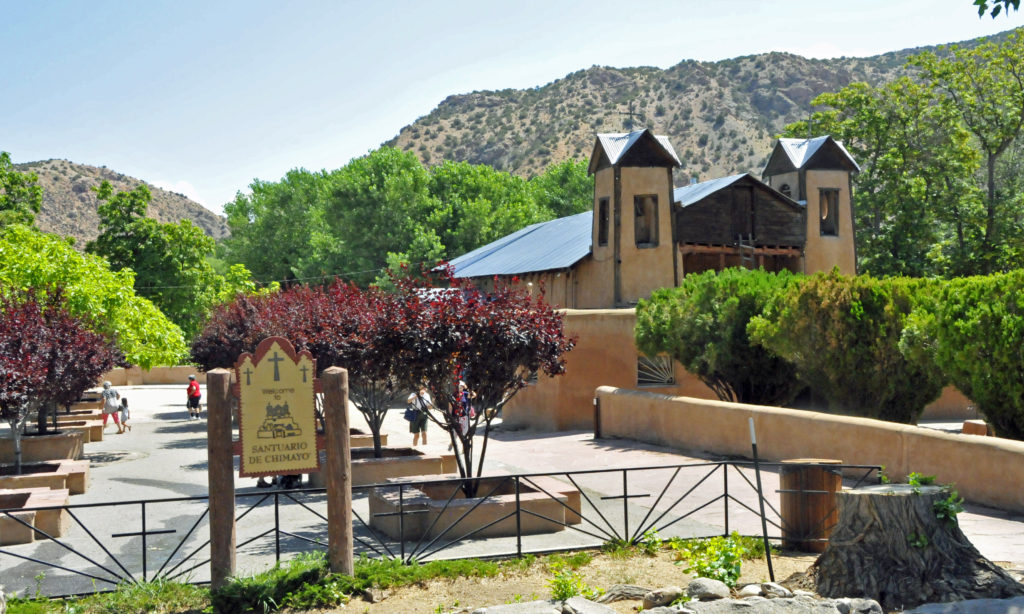
Every year thousands of people make their way to El Santuario de Chimayó (The Sanctuary of Chimayó), a small Roman Catholic church about 27 miles north of Santa Fe, New Mexico. Most are attracted by its dirt.
In about 1810, Bernardo Abeyta, a resident of a small agricultural settlement in the unincorporated area called Chimayó, New Mexico, built a chapel in his pasture in honor of the Black Christ of Esquipulas, a wooden image of Jesus found in Esquipulas, Guatemala, and believed to have miraculous healing powers. People soon began coming to Abeyta’s chapel from all over New Mexico, seeking healing miracles closer to home. In 1814, Abeyta received permission from Catholic authorities to build a new church to accommodate the pilgrims. In 1816, he opened a 1400-square foot adobe church featuring twin bell towers on the site of his chapel. As time went by, the location of the church became associated with a legend involving a buried crucifix and the healing powers of the Black Christ of Esquipulas came to be associated with the dirt beneath Abeyta’s church.
Today, about 300,000 people visit El Santuario de Chimayó each year. Many of the visitors come during Holy Week, with some walking from as far away as Albuquerque. A pit in a small room in the church contains the treasured tierra bendita (holy dirt), which visitors rub on their bodies, take with them or even eat to obtain its claimed healing properties. Discarded crutches displayed near the pit are said to have come from visitors who were instantly cured of their disabilities. The Catholic Church takes no position on whether the dirt actually has healing properties, but each year believers take about 60,000 pounds of it. Up to twice a day, priests haul dirt from the nearby hillsides and bless it while refilling the pit.